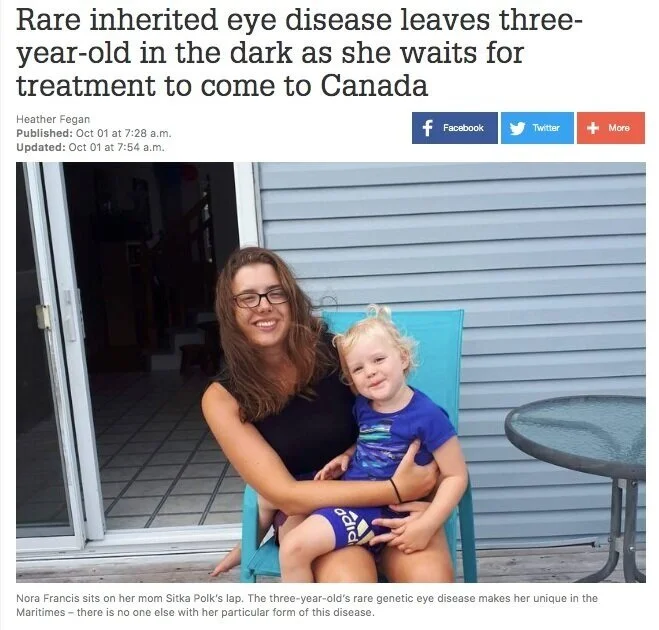Let there be light
/A rare eye disease leaves three-year-old in the dark as she waits for treatment to come to Canada
It’s the height of summer and the sun is shining, the heat is blazing upwards of 35 degrees. The big picture windows at the front of the Francis house and glass patio doors to the back deck let natural light flood in.
It’s a bright, sunny day, but every lamp in every corner of the house is turned on.
Comfortable in her familiar surroundings, three-year-old Nora zips around the house without a care, climbing on the back of the sofa, climbing on her mom. She shows off her blue fingernail polish that matches her toes, her mom’s toes, and, coincidently, mine.
Dad tries to distract her with a blue Freezie, but the excitement of all the colour co-ordination revs her up even more. She’s as happy and excitable as most other three-year-olds.
But come twilight, it’s like an instant switch. While other kids will be playing and shrieking outside for another hour or so, Nora becomes uncomfortable, starts slowing down, curls up on her mom or dad’s lap.
That’s because Nora has a rare, inherited eye disease called Leber’s Congenital Amaurosis. It causes night blindness for Nora. It’s a condition with severe vision impairment and degenerative blindness that will get worse over time.
Continuing reading Nora’s story: Let There be light: Rare eye disease leaves three-year-old in the dark as she waits for treatment to come to Canada

